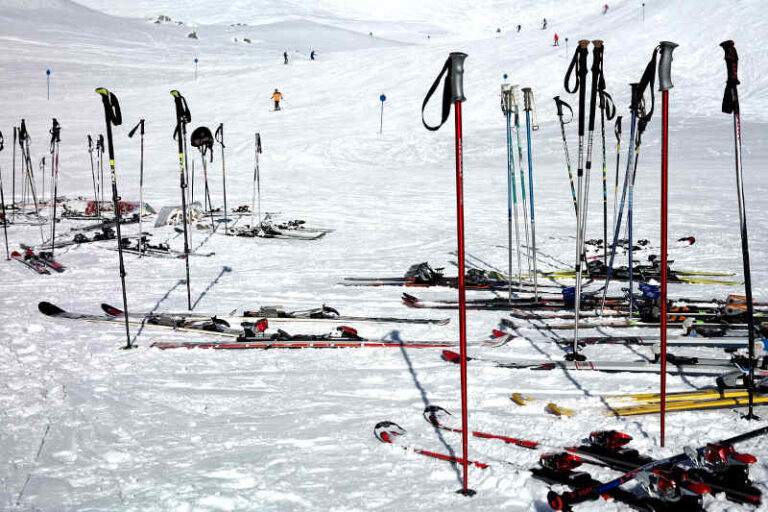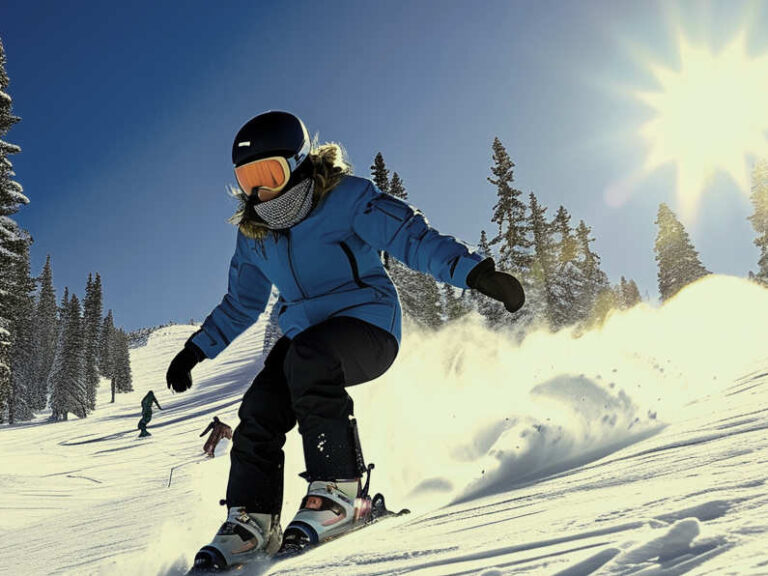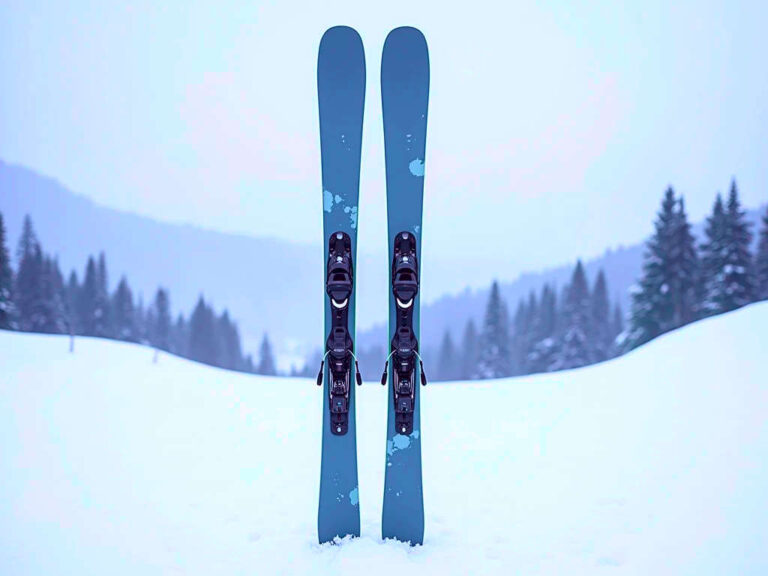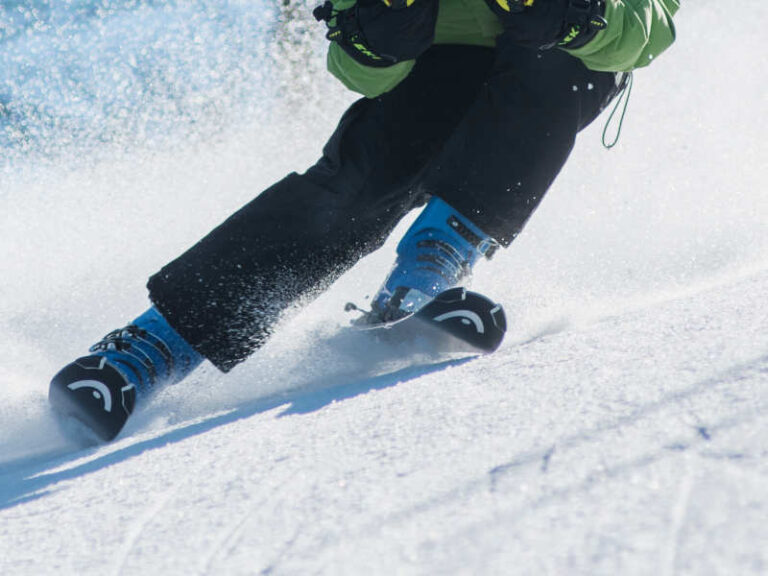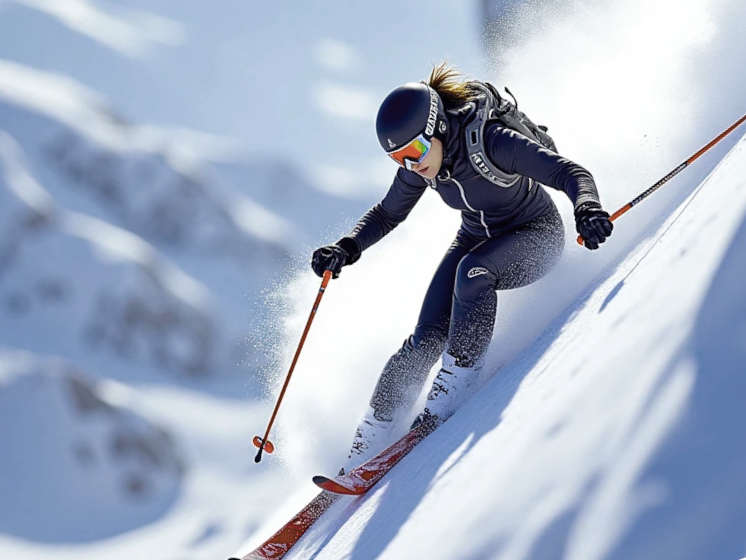5-Minute Warm-Up Routine for Downhill Skiing
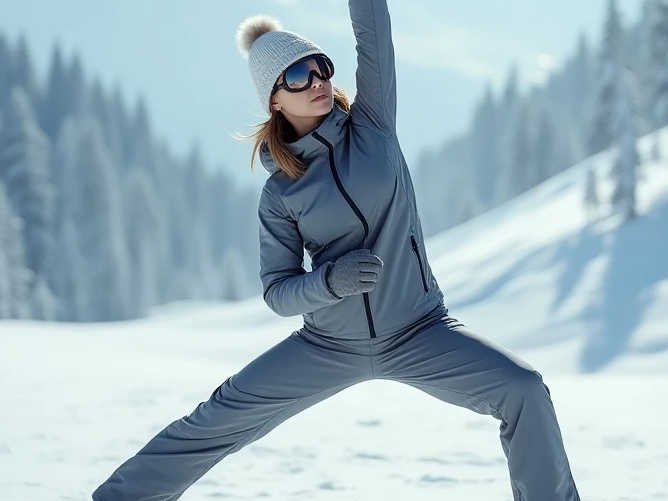
Introduction
This article covers a 5-minute warm-up routine designed to help beginner and intermediate skiers prepare for downhill skiing. The routine includes six easy exercises: a full-body shake, leg swings, lunges with a twist, snow angel squats, toe touches, and calf raises. Each exercise is simple to perform and targets the muscles and balance needed for skiing. This warm-up helps reduce injury risk, improve flexibility, and increase balance, making for a smoother skiing experience. Enjoy this fun, effective routine to feel ready and confident on the slopes!
Warming up before you ski is essential. Even if you’re eager to hit the slopes, five minutes of stretching and movement can make all the difference in how you feel during and after your runs. This routine will not only wake up your muscles but also help prevent soreness, stiffness, and cramps. Plus, a quick warm-up can improve your balance and coordination, both crucial for smooth, controlled skiing.
You can do the following warm up at the base of the mountain or in your lodge if you want to feel a little less “on display.” Follow these six simple exercises, and you’ll be ready to glide down the slopes like a pro (or at least avoid some of those awkward early-morning stumbles).
1. The “Shake It Out” – 30 seconds
Start by loosening up your whole body with a quick shake-out. Stand up tall, lift your arms, and shake them from side to side. Then, let your arms fall to your sides and do the same with your legs. Wiggle your ankles, bend your knees, and don’t be afraid to let loose. The goal is to get the blood flowing and loosen up any tension.
Why it helps: This whole-body shake warms up your muscles and joints. You’ll feel looser and ready for more focused movements. Shaking out is like waking up each part of your body for skiing.
Pro tip: Feel free to throw in a little dance move. No one’s watching—or, if they are, they’re probably wishing they were as cool as you!
2. Dynamic Leg Swings – 1 minute (30 seconds per leg)
For this move, stand on your left leg and swing your right leg forward and back in a controlled motion. Start with small swings to avoid any pulling and gradually increase your range. After 30 seconds, switch to your other leg.
Why it helps: Leg swings help loosen up your hip flexors and glutes, which are critical for skiing movements. This exercise also improves balance, helping you maintain control as you move down the mountain.
Pro tip: Channel your inner martial artist! But keep the kicks low so you don’t accidentally kick your ski rack or the friend next to you.
3. Lunge and Twist – 1 minute
For this exercise, step forward with your right leg into a lunge. Lower your body until your front thigh is parallel to the ground, and then twist your torso to the right. Return to the center, step back, and repeat on the other side. Alternate lunges and twists for one minute.
Why it helps: Lunges warm up your quads, glutes, and calves, while the twist engages your core. This combo move also improves balance and stability, helping you feel steady on your skis.
Pro tip: Twisting while lunging is the skier’s version of patting your head and rubbing your belly. It may feel a little awkward, but it’s a great way to prepare for all the twists and turns on the slopes!
4. Snow Angel Squats – 1 minute
Stand with your feet hip-width apart and arms at your sides. Lower your body into a squat, then as you stand up, lift your arms overhead as if making a snow angel. Repeat for one minute, moving smoothly from squat to overhead reach.
Why it helps: This exercise activates your legs and glutes while opening up your shoulders. Strong legs are essential for skiing, and warming up your shoulders helps with pole planting and general upper-body movement.
Pro tip: If actual snow angels were part of your warm-up, we’d be here all day. Save those for après-ski (and maybe a softer snowbank).
5. Toe Touches with a Reach – 1 minute
Stand with your feet shoulder-width apart. Reach down gently and slowly to touch your toes (or as close as you can comfortably reach). As you stand back up, reach your arms overhead. Repeat this move for a full minute slowly and with control being careful not to over stretch or strain you back and hamstrings.
Why it helps: Toe touches stretch out your hamstrings and lower back, both of which are under a lot of pressure while skiing. The overhead reach helps loosen up your upper body and improves circulation.
Pro tip: If touching your toes feels like a stretch :), no worries—work within your range of motion. You’ll see improvement as the season progresses!
6. Calf Raises – 30 seconds
Finish off with a simple but effective calf exercise. Stand with your feet hip-width apart and slowly lift onto the balls of your feet, then lower down. Repeat for 30 seconds, moving in a controlled motion.
Why it helps: Calf raises warm up your calves and improve your balance. Your calves play a big role in stability and controlling your stance on skis, so this move can help reduce that burning feeling halfway down a run.
Pro tip: Think of calf raises as a quick boost to prevent “burning calf syndrome” later. They’re small, simple, and effective!
Alternative 5 Minute Ski Warm Up
If you are more into watching than reading check out this video for an alternative pre-ski warm up routine:
A 5-minute warm-up is a simple yet powerful way to prepare for a fun day on the slopes. Each exercise targets muscles and movements that you’ll rely on while skiing. Warm-up routines helps improve circulation, flexibility, and balance, making your skiing experience more comfortable and enjoyable.
Next time you’re gearing up to hit the mountain, take five minutes for this routine. Your body will thank you, and you’ll feel more in control on the mountain. Remember, a little prep can go a long way in helping you avoid soreness and ski at your best all day long.

by: Blair Fontana
A versatile freelance content creator known for her engaging writing style and diverse range of interests. Blair has carved out a niche in lifestyle writing, captivating her audience with insightful articles… read more

